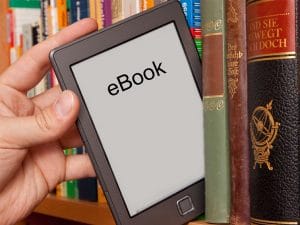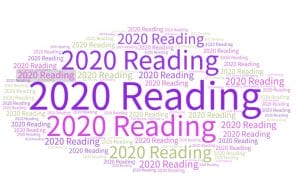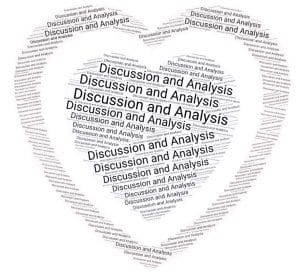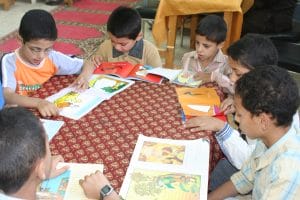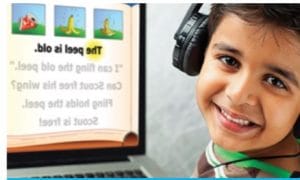During the lockdown and virtual classes, librarians are looking out for ways to connect with students, teachers and the community.
So, what can librarians do during this time of virtual learning with students?
Virtual Learning eBooks
During this time, librarians can capitalize on all the beautiful eBooks available for students. An opportunity to use the interactive eBooks where the books are either animated and read aloud rather than the pdf versions. Many Pdf’s are floating around, but as ethical users of information, we must ensure that our students are using the eBooks ethically. Fair use guidelines may not always be used, especially when eBooks are available for purchase or shared by the vendors at discounted rates or free.
Let’s capitalize on the eBooks that are offered for free by the companies.
Library Classes – Virtual
During the library online classes, we can capitalize this moment to create a love for reading and writing. Instead of using activities like – making your bookmark, asking questions like who is the character? what is the moral of the story? Let us use this opportunity to ask open-ended questions? Questions that help students think and help students develop the 21st-century skills of thinking analytically, critically or even having their own opinions and perspectives of stories that they read.
Examples of Virtual Learning eBooks
Vooks is offering a 1-month free trial. A kid-safe, ad-free streaming library of read-aloud animated storybooks. A curated list of eBooks that help builds vocabulary, love of reading, immersion, and fluency.
For example, Title fo the book: The Easter Unicorn is a story about an Easter Bunny who is away on vacation, when a magical unicorn comes to the rescue, saving Easter Day!
Here is a list of activities that might go with the story:
Activity 1: Students can read the picture and retell the story and record the story using the Flipgrid app (video response)
Activity 2: Students can research and draw three magical creatures that do not exist.
Activity 3: Students can write a paragraph, describing a unicorn to someone who hasn’t seen one.
Activity 4: Students can research and describe why rabbits are related to easter?
Activity 5: Students can explain why easter celebration is in April?
Virtual Learning Activity
RazPlus is offering a 2-month free trial. A guided reading program, with lesson plans and discussion cards. Try this out. For example: Title of the book: Gorillas by Keera Freed.
Gorillas are the largest primates in the world. Gorillas is an informative text that highlights how gorillas survive in the forests of Africa. The book can also be used to teach students how to identify main idea and details as well as to summarize to better understand the text. If you want to teach using the skills, get this trial and learn new teaching strategies and apply them to your students. (Available on Discussion Cards of the story)
- How are gorillas similar and different than human beings (Skill of compare and contrast)
- Why do you think humans teach gorillas sign language. How does this help man and animals? (Analysis)
- Why might gorilla babies ride on their mother back (Make inferences & draw conclusions)
- Why are gorillas endangered? (Cause and Effect)
- How can people help gorillas? (Evaluate)
Vooks: A streaming service for kids, where storybooks come to life!
Finally, a better screen time option. Title of the book: Inventors, who changed the World.
Activities related to the story:
- What qualities or characteristics should a person have to become an inventor? What are some traits you may have?
- Select on the inventions you learned about and explain how it has impacted the world.
- Research on the internet and find out three inventions in the 21st century that have positively impacted the world and explain.
- What would happen if inventors did not share their failed research ideas and successful ideas with the world?
- Why is it important to share ideas with others? How is it beneficial to the community?
- What is the author’s purpose in writing the story? How do you know it?
StoryWeaver is another free eBook resources that students can use to inquire, think critically and use the eBooks to create stories.
Title of the book: More or Less? Need to Guess! ,Written by Gayathri Tirthapura, Illustrated by Sahitya Rani – So many mithai boxes to count, so little time! Can Ranjita and Vikram do it? Yes, using a cool math trick called ‘Approximately More-or-Less’! Read this fun wedding story to learn the trick yourself.
Activity 1: What was the problem in the story and how was it solved?
Activity 2: Describe a wedding that you last attended?
Activity 3: What is the author’s purpose for writing the story? Is it to inform? Entertain or Persuade? How do you know that? Explain
Activity 4: Create a story that will help solve a math problem.
Activity 5: What genre is this story? Explain.
GetEpic: An online eBook Platform: Title of the Book: The Trojan Horse: The Fall of Troy.
Ancient Greece’s best warriors battled their enemies, the Trojans, in a desperate attempt to win back King
- What genre is this story?
- How is a myth different from historical fiction?
- Describe the external and internal characteristics of the main character?
- Who are the supporting characters and how do they bring out the best qualities of the main character?
- Rewrite the Greek Myth using Indian setting and characters
- What are some of the Indian myths you have heard? How is it different and similar to the Indian myths
